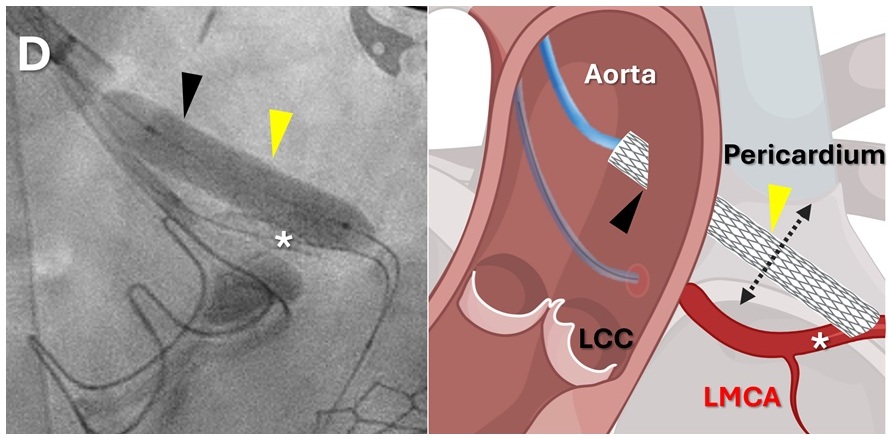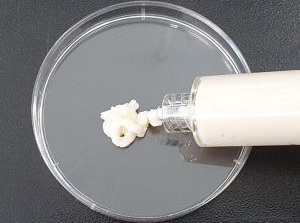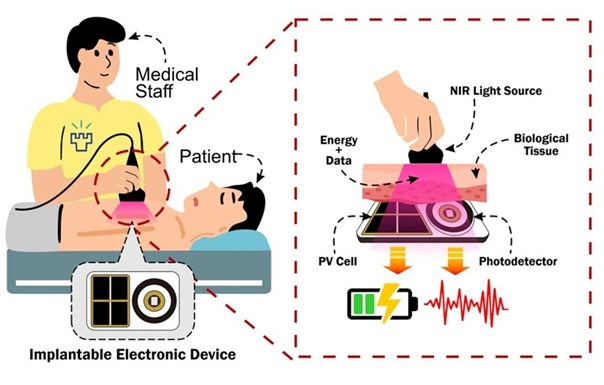Emergency Responders Should Carry Blood Products
|
By HospiMedica International staff writers Posted on 27 Sep 2015 |
A new study suggests that emergency first responders ought to carry blood products in order to significantly improve trauma patients’ chances of survival.
Researchers at the UK Defense Science and Technology Laboratory (Dstl; Porton Down, United Kingdom), Queen Mary, University of London (United Kingdom), and the Royal Center for Defense Medicine (RCDM; Birmingham, United Kingdom) conducted a study to compare the potential impact of emergency resuscitation using combined packed red blood cells and fresh frozen plasma (PRBCs:FFP) at a 1:1 ratio; PRBCs alone; or standard of care 0.9% saline during severe injury.
To do so, 24 terminally anesthetized pigs received a controlled soft tissue injury and controlled hemorrhage of 35% of their blood volume, followed by a 30 minute shock phase. The animals were then allocated randomly to three treatment groups during a simulated prehospital evacuation phase. The first group were allocated to hypotensive resuscitation using 0.9% saline, the second to PRBCs:FFP, and the third to PRBCs alone. Following this phase, in-hospital resuscitation to a normotensive systolic blood pressure target of 110 mmHg using PRBCs:FFP was performed in all three groups.
The results showed that considerable coagulopathy developed in the first group, which persisted for 60–90 minutes into the in-hospital phase. The coagulopathy was significantly reduced in groups 2 and 3, but not significantly different from each other. Finally, the volumes of resuscitation fluid required was significantly greater in group 1, compared with groups 2 and 3; this difference was principally due to the greater volume of saline used in group 1. The study was published in the August 2015 issue of Shock.
“Badly injured people often lose the ability to form a blood clot properly, just when they need it most,” said senior author Emrys Kirkman, MD, principal scientist at Dstl. “Our research provides the scientific foundation for the premise that giving blood products before seriously injured patients reach hospital could help save lives, as it improves the ability to form blood clots.”
In 2008 the medical evacuation response team in Afghanistan started carrying blood products to injured personnel on the frontline, thanks to the development of special refrigeration units on the Chinook helicopters. The emergency care procedure, among other measures, has been credited with saving a number of lives in Afghanistan. It could also have an impact for civilian first responders,, but currently only a few air ambulance services in the UK have the mandate, staff, and systems required to carry blood products.
Related Links:
UK Defense Science and Technology Laboratory
Queen Mary, University of London
Royal Center for Defense Medicine
Researchers at the UK Defense Science and Technology Laboratory (Dstl; Porton Down, United Kingdom), Queen Mary, University of London (United Kingdom), and the Royal Center for Defense Medicine (RCDM; Birmingham, United Kingdom) conducted a study to compare the potential impact of emergency resuscitation using combined packed red blood cells and fresh frozen plasma (PRBCs:FFP) at a 1:1 ratio; PRBCs alone; or standard of care 0.9% saline during severe injury.
To do so, 24 terminally anesthetized pigs received a controlled soft tissue injury and controlled hemorrhage of 35% of their blood volume, followed by a 30 minute shock phase. The animals were then allocated randomly to three treatment groups during a simulated prehospital evacuation phase. The first group were allocated to hypotensive resuscitation using 0.9% saline, the second to PRBCs:FFP, and the third to PRBCs alone. Following this phase, in-hospital resuscitation to a normotensive systolic blood pressure target of 110 mmHg using PRBCs:FFP was performed in all three groups.
The results showed that considerable coagulopathy developed in the first group, which persisted for 60–90 minutes into the in-hospital phase. The coagulopathy was significantly reduced in groups 2 and 3, but not significantly different from each other. Finally, the volumes of resuscitation fluid required was significantly greater in group 1, compared with groups 2 and 3; this difference was principally due to the greater volume of saline used in group 1. The study was published in the August 2015 issue of Shock.
“Badly injured people often lose the ability to form a blood clot properly, just when they need it most,” said senior author Emrys Kirkman, MD, principal scientist at Dstl. “Our research provides the scientific foundation for the premise that giving blood products before seriously injured patients reach hospital could help save lives, as it improves the ability to form blood clots.”
In 2008 the medical evacuation response team in Afghanistan started carrying blood products to injured personnel on the frontline, thanks to the development of special refrigeration units on the Chinook helicopters. The emergency care procedure, among other measures, has been credited with saving a number of lives in Afghanistan. It could also have an impact for civilian first responders,, but currently only a few air ambulance services in the UK have the mandate, staff, and systems required to carry blood products.
Related Links:
UK Defense Science and Technology Laboratory
Queen Mary, University of London
Royal Center for Defense Medicine
Latest Critical Care News
- Ultrasonic Sensor Enables Cuffless and Non-Invasive Blood Pressure Measurement
- Simple Change in Sepsis Treatment Could Save Thousands of Lives
- AI-Powered ECG Analysis Enables Early COPD Detection
- Soft Wireless Implant Treats Inflammatory Bowel Disease
- Pill Reports from Stomach When It Has Been Swallowed
- Wireless Sensing Technology Enables Touch-Free Diagnostics of Common Lung Diseases
- Early Detection and Targeted Blood Purification Could Prevent Kidney Failure in ICU Patients
- New Cancer Treatment Uses Sound-Responsive Particles to Soften Tumors
- Sprayable Powder-Type Hemostatic Agent Stops Bleeding in One Second
- Ultra-Stable Mucus-Inspired Hydrogel Boosts Gastrointestinal Wound Healing
- AI Model Helps Diagnose Often Undetected Heart Disease from Simple EKG
- E-Tattoos Harvest Energy and Monitor Health in Real Time
- Focused Ultrasound Tricks Tumors into Marking Themselves for Destruction
- World's Smallest Programmable Robot Opens Up New Possibilities in Medicine
- Remote Ventilate View Platform Enables Real-Time Monitoring of Patient-Ventilator Asynchrony
- Soft “Cyborg” Cardiac Patches Improve Stem Cell Heart Repair
Channels
Surgical Techniques
view channel
Minimally Invasive Coronary Artery Bypass Method Offers Safer Alternative to Open-Heart Surgery
Coronary artery obstruction is a rare but often fatal complication of heart-valve replacement, particularly in patients with complex anatomy or prior cardiac interventions. In such cases, traditional open-heart... Read more
Injectable Breast ‘Implant’ Offers Alternative to Traditional Surgeries
Breast cancer surgery can require the removal of part or all of the breast, leaving patients with difficult decisions about reconstruction. Current reconstructive options often rely on prosthetic implants... Read morePatient Care
view channel
Revolutionary Automatic IV-Line Flushing Device to Enhance Infusion Care
More than 80% of in-hospital patients receive intravenous (IV) therapy. Every dose of IV medicine delivered in a small volume (<250 mL) infusion bag should be followed by subsequent flushing to ensure... Read more
VR Training Tool Combats Contamination of Portable Medical Equipment
Healthcare-associated infections (HAIs) impact one in every 31 patients, cause nearly 100,000 deaths each year, and cost USD 28.4 billion in direct medical expenses. Notably, up to 75% of these infections... Read more
Portable Biosensor Platform to Reduce Hospital-Acquired Infections
Approximately 4 million patients in the European Union acquire healthcare-associated infections (HAIs) or nosocomial infections each year, with around 37,000 deaths directly resulting from these infections,... Read moreFirst-Of-Its-Kind Portable Germicidal Light Technology Disinfects High-Touch Clinical Surfaces in Seconds
Reducing healthcare-acquired infections (HAIs) remains a pressing issue within global healthcare systems. In the United States alone, 1.7 million patients contract HAIs annually, leading to approximately... Read moreHealth IT
view channel
EMR-Based Tool Predicts Graft Failure After Kidney Transplant
Kidney transplantation offers patients with end-stage kidney disease longer survival and better quality of life than dialysis, yet graft failure remains a major challenge. Although a successful transplant... Read more
Printable Molecule-Selective Nanoparticles Enable Mass Production of Wearable Biosensors
The future of medicine is likely to focus on the personalization of healthcare—understanding exactly what an individual requires and delivering the appropriate combination of nutrients, metabolites, and... Read moreBusiness
view channel
Philips and Masimo Partner to Advance Patient Monitoring Measurement Technologies
Royal Philips (Amsterdam, Netherlands) and Masimo (Irvine, California, USA) have renewed their multi-year strategic collaboration, combining Philips’ expertise in patient monitoring with Masimo’s noninvasive... Read more
B. Braun Acquires Digital Microsurgery Company True Digital Surgery
The high-end microsurgery market in neurosurgery, spine, and ENT is undergoing a significant transformation. Traditional analog microscopes are giving way to digital exoscopes, which provide improved visualization,... Read more
CMEF 2025 to Promote Holistic and High-Quality Development of Medical and Health Industry
The 92nd China International Medical Equipment Fair (CMEF 2025) Autumn Exhibition is scheduled to be held from September 26 to 29 at the China Import and Export Fair Complex (Canton Fair Complex) in Guangzhou.... Read more















